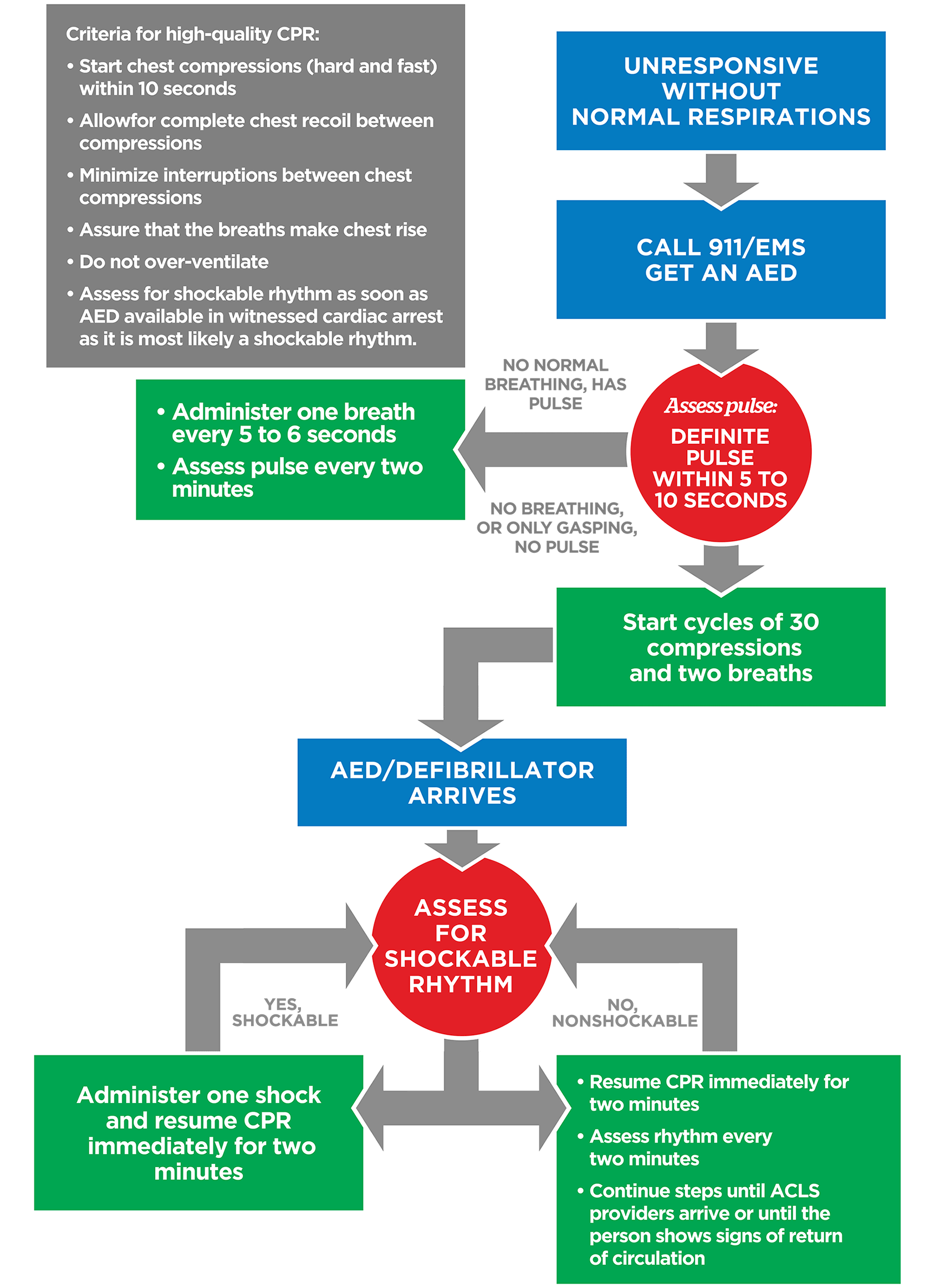Adult Basic Life Support (BLS) Algorithm
Knowing the adult Basic Life Support algorithm is crucial for saving lives in emergency situations involving adults. This guide provides health care professionals and first responders with a step-by-step approach to delivering high-quality Basic Life Support (BLS) to adult patients experiencing cardiac arrest or other life-threatening conditions.
Understanding the Adult BLS Algorithm
The adult Basic Life Support algorithm is a systematic sequence of actions designed to assist rescuers in assessing and managing life-threatening emergencies in individuals aged puberty and older. It emphasizes early recognition, immediate activation of emergency response systems, effective chest compressions, timely ventilations, and using Automated External Defibrillators (AEDs) when appropriate.
Adult BLS Algorithm

Figure 7
Key Steps of the Adult Basic Life Support Algorithm
1. Ensure Scene Safety
Before approaching the patient, ensure the environment is safe for you and the victim.
2. Check Responsiveness
Gently tap the person’s shoulders and shout to see if they respond. Use a loud voice, asking, “Are you okay?”
3. Activate Emergency Response System
- If the person is unresponsive:
- Shout for help.
- If someone else is available to help, instruct them to call EMS and get an AED.
- Call emergency services and put the phone on speaker mode if you are alone and have a mobile phone.
4. Assess Breathing and Pulse
- Breathing:
- Look for normal breathing (not gasping or irregular breaths).
- Pulse:
- Check the carotid pulse for no more than 10 seconds.
- Locate the pulse by placing two fingers on the trachea and sliding them into the groove between the trachea and neck muscle.
If the person is not breathing normally and has no pulse, begin CPR immediately following the adult Basic Life Support algorithm.
5. Begin High-Quality CPR
- Chest Compressions:
- Place the heel of one hand on the center of the victim’s chest (lower half of the sternum).
- Place your other hand on top of the first, interlocking your fingers.
- Keep your arms straight and shoulders directly over your hands.
- Compression Depth: At least 2 inches (5 cm) but not more than 2.4 inches (6 cm).
- Rate: 100 to 120 compressions per minute.
- Allow full chest recoil after each compression.
- Ventilations:
- After 30 compressions, open the airway using the head-tilt-chin-lift method.
- Pinch the victim’s nose closed and give two breaths, each over 1 second, watching for chest rise.
- Avoid excessive ventilation.
6. Use of Automated External Defibrillator (AED)
- Attach the AED as soon as it is available.
- Turn on the AED and follow the prompts.
- Pads Placement:
- Expose the chest and wipe it dry if necessary.
- Attach the AED pads to the victim’s bare chest as indicated on the pads.
- Analyze Rhythm:
- Ensure no one is touching the victim during rhythm analysis.
- Shock Delivery:
- If a shock is advised, ensure everyone is clear of the victim and press the shock button.
- Resume CPR immediately after the shock is delivered or if no shock is advised.
7. Continue CPR Cycles
- Continue cycles of 30 compressions and two breaths.
- Reassess the victim every 2 minutes or after five cycles of CPR.
- Rotate compressors every 2 minutes to reduce fatigue.
